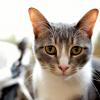Home
Tips & Tricks
Sony Tips
Sony a6400
Sony a6300
Sony a6000
Canon Tips
Canon M50 Mark II
Canon M50
Canon 6D Mark II
Canon 6D
Canon 7D Mark II
Canon 7D
Canon 90D
Canon 80D
Canon 77D
Canon 70D
Canon 60D
Canon T7 · 2000D
Canon T7i · 800D
Canon T6s · 760D
Canon T6i · 750D
Canon T6 · 1300D
Canon T5i · 700D
Canon T5 · 1200D
Canon T4i · 650D
Canon T3i · 600D
Canon T3 · 1100D
Canon T2i · 550D
Canon SL2 · 200D
Canon SL1 · 100D
Nikon Tips
Nikon D750
Nikon D500
Nikon D7500
Nikon D7200
Nikon D7100
Nikon D5600
Nikon D5500
Nikon D5300
Nikon D5200
Nikon D5100
Nikon D3500
Nikon D3400
Nikon D3300
Nikon D3200
Nikon D3100
Cheat Sheets
Sony Cheat Sheets
Sony a6300
Sony a6000
Canon Cheat Sheets
Canon M50 Mark II
Canon M50
Canon 6D Mark II
Canon 6D
Canon 7D Mark II
Canon 7D
Canon 90D
Canon 80D
Canon 77D
Canon 70D
Canon 60D
Canon T7 · 2000D
Canon T7i · 800D
Canon T6s · 760D
Canon T6i · 750D
Canon T5i · 700D
Canon T6 · 1300D
Canon T5 · 1200D
Canon T4i · 650D
Canon T3i · 600D
Canon T3 · 1100D
Canon T2i · 550D
Canon SL2 · 200D
Canon SL1 · 100D
Nikon Cheat Sheets
Nikon D750
Nikon D500
Nikon D7500
Nikon D7200
Nikon D7100
Nikon D5600
Nikon D5500
Nikon D5300
Nikon D5200
Nikon D5100
Nikon D3500
Nikon D3400
Nikon D3300
Nikon D3200
Nikon D3100


Comments
Now that memory and computer storage have become relatively cheap, the added bulk of raw files is little disadvantage. You can read them in dedicated Nikon software or in various programs such as Lightroom, and even in some of the free viewers such as Irfanview or Faststone, and do bulk conversions to JPG without disturbing the originals.
The View NX2 program that comes with the D3200 does some of these things, and only Nikon software can handle active D-lighting correctly. If you do not use a Nikon program you're probably best off leaving active D-lighting off in the camera if you shoot raw.
View NX2 does no noise reduction, but there are other programs that can help. Among them is the free Nikon Capture NX-D program you can download from Nikon's web site. It duplicates much of what View NX2 does, but adds some features, including a noise reduction function with a number of variables.
If you do not intend to post process, JPG has the small advantage that it uses much less file space, and the somewhat larger advantage that the camera processes files faster. The first advantage may occasionally be useful if you find you're running short of card space and have no spares handy. The second can be useful if you find that multi exposure bursts are filling the buffer and causing the camera to stall.
The D3200's buffer will hold about 8 Raw shots at the fastest shutter speed before it stops the shutter and waits to transfer to the card. Transfer occurs at the same time, so the faster the card, the larger the apparent capacity. The buffer can hold 14 large fine JPG files, and can transfer them faster too. So if you're having problems with camera stalling when shooting sports or other burst-mode "spray and pray" situations, you might want to switch. Otherwise, though, I'd stick with raw.
P.S. the buffer capacity varies, and apparently it's also its slowest at high ISO.
I tried to use the settings off the portrait cheat sheets I bought on here but the pictures seemed so dark. I suppose if I kept it that way, I could have lightened it up in the View NX2, right?
Note that in the cheat sheet instructions, no shutter speed is specified. Use the camera's meter (the bar in the middle of the display) to determine the correct shutter speed. If it is coming out dark, decrease the shutter speed (each click of the wheel = 1/3 stop). If faces are shaded or if the sun position is difficult, you may have to compensate more.
You can achieve similar results by shifting to A mode, keeping all the settings suggested, and letting the camera choose a shutter speed. If the picture is dark, you'll have to use the compensation button. If you're in light that is changing very quickly, having the camera keep track can be a bit more accurate, but if your light is consistent, manual mode is a little quicker and easier.
Although it's fairly easy to recover dark shadow detail, especially in Raw files, it's preferable to get exposure right, and even a tiny bit on the bright side at the start.
Digital information is funny, in that, like all electronic signals, it is quietest and contains the most information when it's near its maximum volume, which in this case means "almost white". You can pull out dark information, but when you do you're amplifying a signal, and with it you're amplifying the noise. The kicker though is that if you overdo the lightness and go above the maximum, the blown highlights contain no information at all! It goes from best to worst rather abruptly.
Ideally, you want an image that is as bright as you can get without any blown highlights, or with only things you don't care about (e.g. a window at the edge) blown.
In fact, one of the tricks for dark area shooting is to overexpose a little, and lower the exposure in post. When you turn down the signal, you turn down the noise at the same time.